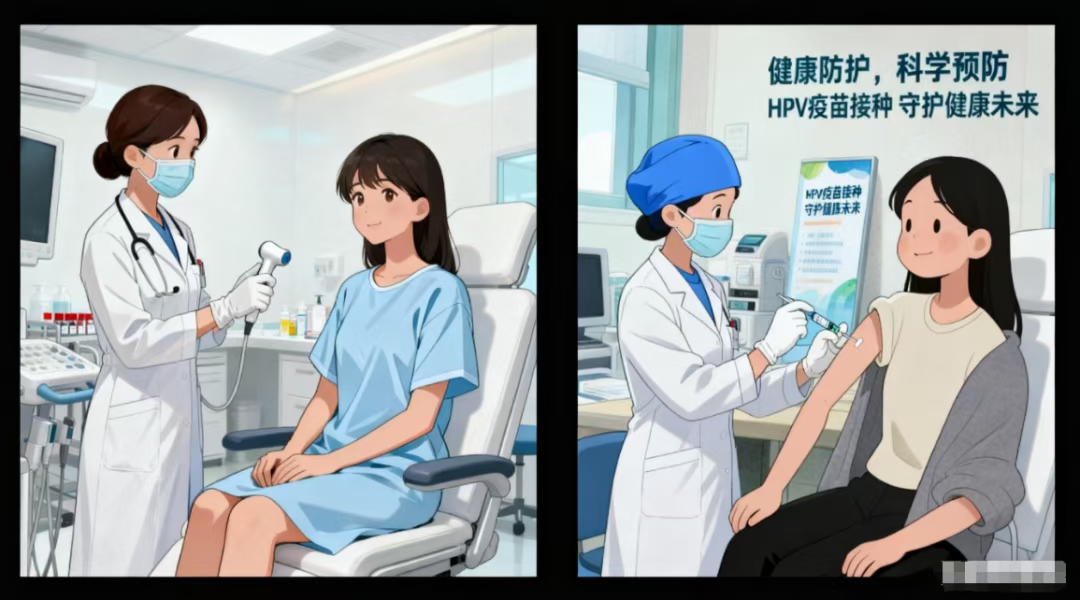Confronting Cervical Cancer: A Comprehensive Understanding from Causes to Cure
Confronting Cervical Cancer: A Comprehensive Understanding from Causes to Cure
Cervical cancer, once labeled a "silent killer" threatening women’s health, is now a cancer with well-defined causes—one that is preventable and treatable. Understanding it deeply is our first step toward defeating it.
Ⅰ.Uncovering the Root Cause: HPV Is the Main Culprit
Virtually all (over 95%) cervical cancers stem from persistent infection with high-risk human papillomavirus (HPV).
HPV is incredibly common: It spreads primarily through sexual contact, and women who are sexually active face an 80–90% lifetime risk of infection. Think of it like a "cold"—in most cases, the body’s immune system clears the virus automatically within 1–2 years.
"Persistent infection" is the critical turning point: Only when the immune system fails to eliminate the virus from specific high-risk strains (e.g., HPV-16 and HPV-18, which cause over 70% of cervical cancers) does long-term, ongoing infection develop. This can trigger a lengthy progression: HPV infection → cervical intraepithelial neoplasia (CIN, a precancerous lesion) → invasive cervical cancer—a process that typically takes 5–15 years.

II. Building Defense Lines: Prevention Outweighs Cure
We have two highly effective lines of defense against cervical cancer:
Primary Prevention: HPV Vaccination
What it does: Vaccines mimic the virus to stimulate the body to produce antibodies, blocking viral invasion before it happens. This is the fundamental way to prevent HPV infection.
Vaccine types: Currently, there are bivalent (2-strain), quadrivalent (4-strain), and nonavalent (9-strain) vaccines. The "valence" refers to the number of high-risk HPV strains they protect against. No need to fixate on valency—getting the available vaccine as early as possible is best.
Timing: The WHO recommends girls aged 9–14 as the priority group, with vaccination before first sexual intercourseyielding optimal results. However, vaccination remains beneficial even if you’ve had sex or are older.
Secondary Prevention: Regular Cervical Cancer Screening
Since vaccines don’t cover all high-risk HPV strains, regular screening is still critical after vaccination.
The "double protection" of screening:
•HPV testing: Checks for the presence of the culprit pathogen (high-risk HPV strains).
•TCT (ThinPrep Cytologic Test): Examines whether cervical cells have "gone astray" (undergone abnormal changes) due to viral effects.
- Screening recommendations: Sexually active women are generally advised to start screening at 25–30 years old. If combined screening results are negative, the interval can be extended to 5 years.

III. Heed the Warning Signs: Listen to Your Body’s Call
Early-stage cervical cancer and precancerous lesions often show no symptoms—which is exactly why screening is critical. If the following signs appear, the condition may have progressed—seek medical attention immediately:
•Contact bleeding: Vaginal bleeding after sexual intercourse or gynecological exams.
•Irregular vaginal bleeding: Bleeding between periods, prolonged menstrual flow, heavier periods, or postmenopausal bleeding.
•Abnormal vaginal discharge: Increased volume with a foul, fishy odor; or rice-water-like/watery bloody discharge.
•Late-stage symptoms: If cancer invades surrounding tissues, it may cause pelvic pain, swelling/pain in the lower limbs, urinary difficulty, or even renal failure.
IV. Take Action: Precision Treatment & Long-Term Management
Once diagnosed via biopsy, doctors tailor a plan based on clinical stage, age, and fertility needs:
•Precancerous lesions (CIN): These are controllable. Minor procedures like LEEP (Loop Electrosurgical Excision Procedure) or cold knife conization remove abnormal tissue while preserving the uterus and fertility.
•Early-stage cervical cancer (I–IIA stage): Radical surgery (removing the uterus, part of the vagina, and lymph nodes) is the primary treatment. Very early cases may also opt for cervical conization to keep fertility.
•Locally advanced cervical cancer (IIB–IVA stage): Combined radiation therapy + concurrent chemotherapy is standard—highly effective for controlling progression.
•Advanced or recurrent cervical cancer: Options include radiation, chemotherapy, targeted therapy, and immunotherapy—all aimed at controlling the disease, extending survival, and improving quality of life.
Preliminary Review: Zhang Jie
Final Review:Ma Shuqian
